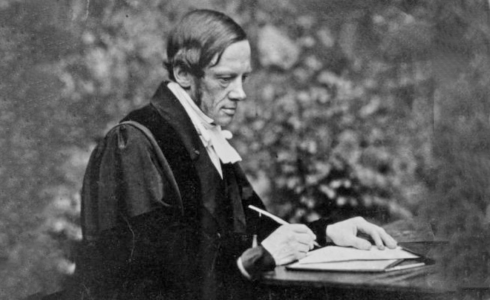For the first several centuries of its existence, an education at the University of Oxford entailed a basic grounding in a range of different subjects, rather than the specialised study of a single discipline. The goal was to turn out well-rounded individuals rather than narrow experts. Nevertheless, the university often tried, wherever possible, to provide advanced instruction in specific areas for those students who were interested.
In particular, at the beginning of the seventeenth century, a number of new professorships were created within the central university to supply this specialised teaching. One of the first, established in 1619 thanks to a bequest from the barrister and Kentish landowner Sir William Sedley, was the Sedleian Professorship of Natural Philosophy.
After a short delay, the first Sedleian Professor, Edward Lapworth, took up the post in 1621. Though he was obliged to lecture on natural philosophy, namely the study of nature and the physical universe, little direct evidence of his teaching remains. Like several of the early Sedleian Professors, Lapworth was a physician who may have found private medical practice more lucrative than delivering his statutory Oxford lectures. A notable exception is Thomas Willis (professor 1660–75), a pioneer in the study of the brain and nervous system, whose lecture notes on that subject survive in the Bodleian Library.
The first part of the eighteenth century saw several incumbent Sedleian Professors whose ability to teach natural philosophy was questionable, but the post passed back into more securely scientific hands when the astronomer Thomas Hornsby was appointed in 1782. By the time of his death in 1810, the rearrangement of teaching duties within the university meant that the Sedleian Professorship fell naturally into the hands of (applied) mathematicians, where it has remained ever since.
During the nineteenth century, the occupants of the Sedleian Chair were mathematics educators first and foremost. Bartholomew Price (professor 1853–98 and pictured) was particularly active in promoting mathematical study in Oxford, where it had previously been something of a neglected subject. With the dawn of the twentieth century, however, the successive professors were increasingly also eminent researchers in applied mathematics. The twentieth century professors included Augustus Love (professor 1899–1940), an expert on the mathematical theory of elasticity, the geophysicist Sydney Chapman (professor 1946–53), and the fluid dynamicist Brooke Benjamin (professor 1979–95). The annual Brooke Benjamin Lecture is still held in the Mathematical Institute in honour of the latter.
The new book Oxford’s Sedleian Professors of Natural Philosophy: The First 400 Years, co-edited by Christopher Hollings (Oxford Mathematics) and Mark McCartney (University of Ulster), forming a companion volume to Robin Wilson’s earlier Oxford’s Savilian Professors of Geometry, tells the story of the foundation of this professorship, and of the many twists and turns in its development, via the individual tales of the varied academics who have occupied the post over the past four centuries.


